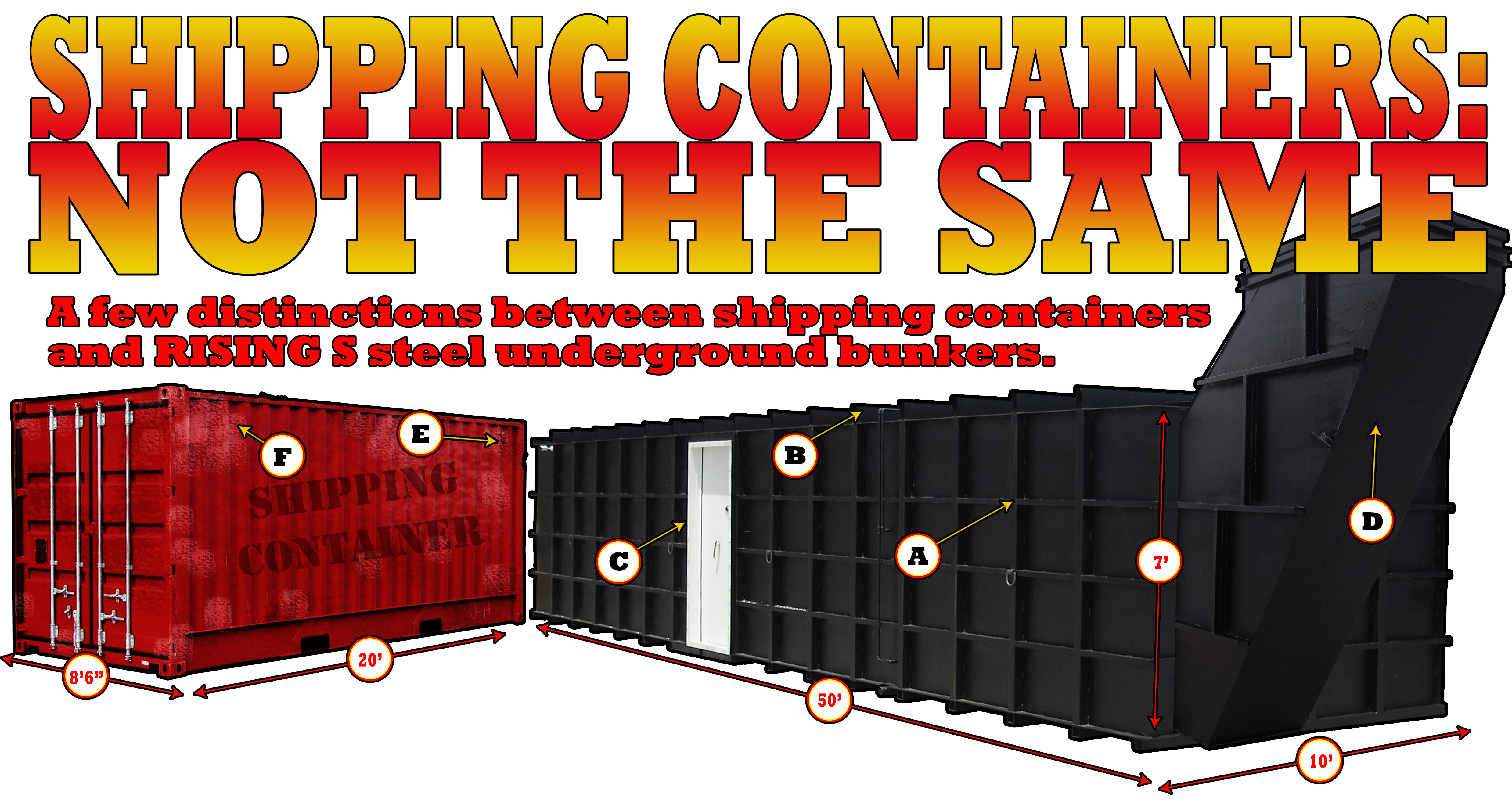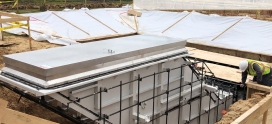Shipping Containers Make Terrible Shelters

It May Be Square But It's No Underground Bunker. Shipping Containers Make Terrible Shelters!
Although we recognize the fact that people have very different means when it comes to being able to prepare a shelter for their family and loved ones. If a shipping container is all that you have available to you then it’s got to be better than nothing.. HOWEVER, with that being said… there are many things that differentiate a Rising S steel bunker from a shipping container. We’ve taken the time to outline some of the differences here.Aside from the obvious size differences where our single-unit shelters are up to twice the size of a standard shipping container; every underground bunker that RSB builds is constructed with the highest standards of quality. Once fabrication is complete, the shelters are coated with a rubberized sealant (rated for 150 years) protecting the vessel from corrosion and water leaks. This allows the unit to “self-regulate” the temperature inside the unit; eliminating moisture & corrosion problems that you will inevitably encounter with shipping containers.
A: Exterior Walls -
RSB Steel bunkers are constructed from 1/4″ plate steel and 1/4″ C-Channel. Shipping containers offer no structural reinforcement and the walls are made from thin 14-gauge steel (less than half the thickness of RSB plate steel). This means that the ENTIRE Rising S unit is a load-bearing structure capable of supporting weights in excess of 300,000lbs. The exterior frame of a RSB underground bunker redistributes weight and pressure across the shelter making it stronger and safer than other shelters – especially shipping containers. Shipping containers are only rigid and load-bearing at it’s 4 corners. It’s highly likely that the walls and ceiling will collapse under the mere weight of the earth. You might as well kiss it good bye in an earthquake if you’re caught inside a shipping container. It can quickly become your coffin if not properly reinforced.
B: Ceiling & Floors -
Constructed from 1/4″ plate steel and 1/4″ 2’x4′ Square Tubing. Shipping containers offer no structural reinforcement and the walls are made from thin 14-gauge steel. There are wood floors in most shipping containers only further weakening the over all strength of the structure.
C: Doors And Expandable Units -
D: Staircase Entry And Hatch Door -
Every underground bunker that Rising S Bunkers builds comes with a steel staircase and entry hatch. This hatch is lockable from the inside and acts as your first line of defense in times of trouble. A security door lies at the foot of the staircase giving occupants a second layer of security and protection against assailants or looters. Shipping containers offer no such convenient entry methods nor do they offer the added security that a RSB staircase and security doors can provide.
E: Shipping Containers: Not A Load Bearing Structure!
WARNING! If you bury a shipping container without re-supporting the walls, ceiling and floor; IT WILL COLLAPSE! The thin steel used in the walls and ceiling isn’t strong enough to support the weight of the dirt. Every shipping container is built to be strongest at the corners. If you place significant weight & pressure anywhere other than the corner posts; the container will collapse. The only way to reinforce the structure is to line it in concrete blocks or in wood… both of which are inferior methods compared to the strength of the heavy steel used in RSB units. Not to mention that regardless of the re-stabilizing method used; it all subtracts from the available floor space.
F: Thin & Poor Construction
The standard shipping container’s walls are very thin (16 gauge steel). These walls are problematic for several reasons. A: They are weaker than the steel used in RSB units and without significant re-stabilization of the walls and roof; they will collapse under the weight of being buried. B: They have no corrosion protection so deterioration is quickened. C. The walls are corrugated so installing a sealed floor is near impossible …short of adding more steel to the unit, Ideally; occupants need to be able to seal the unit off from moisture and potentially toxic air. Air filtration is only possible in units that are air-tight.


